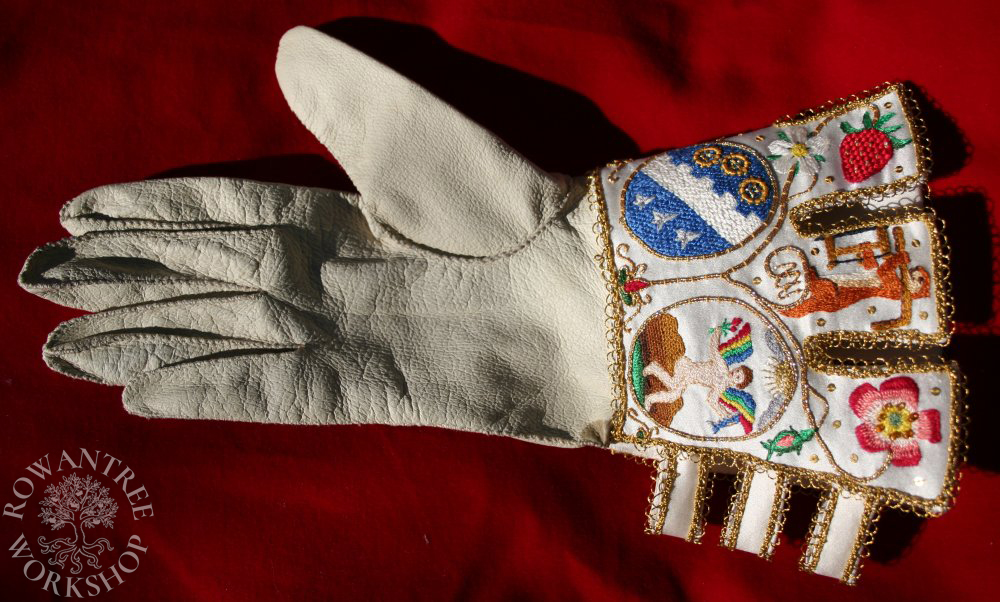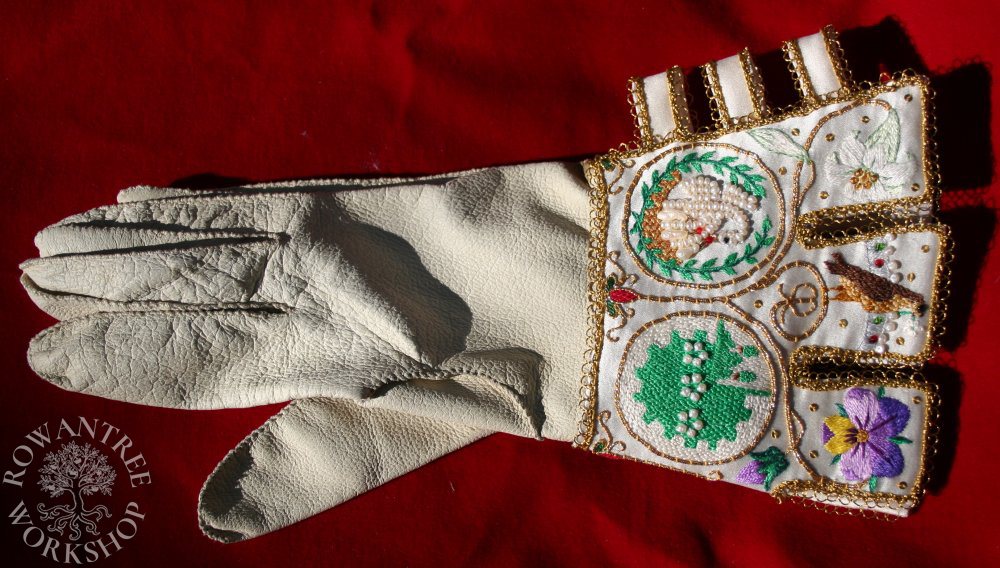A single glove with embroidered cuff, made in the style of the late Elizabethan gloves. I made this for my husband Nico as a token of my love.
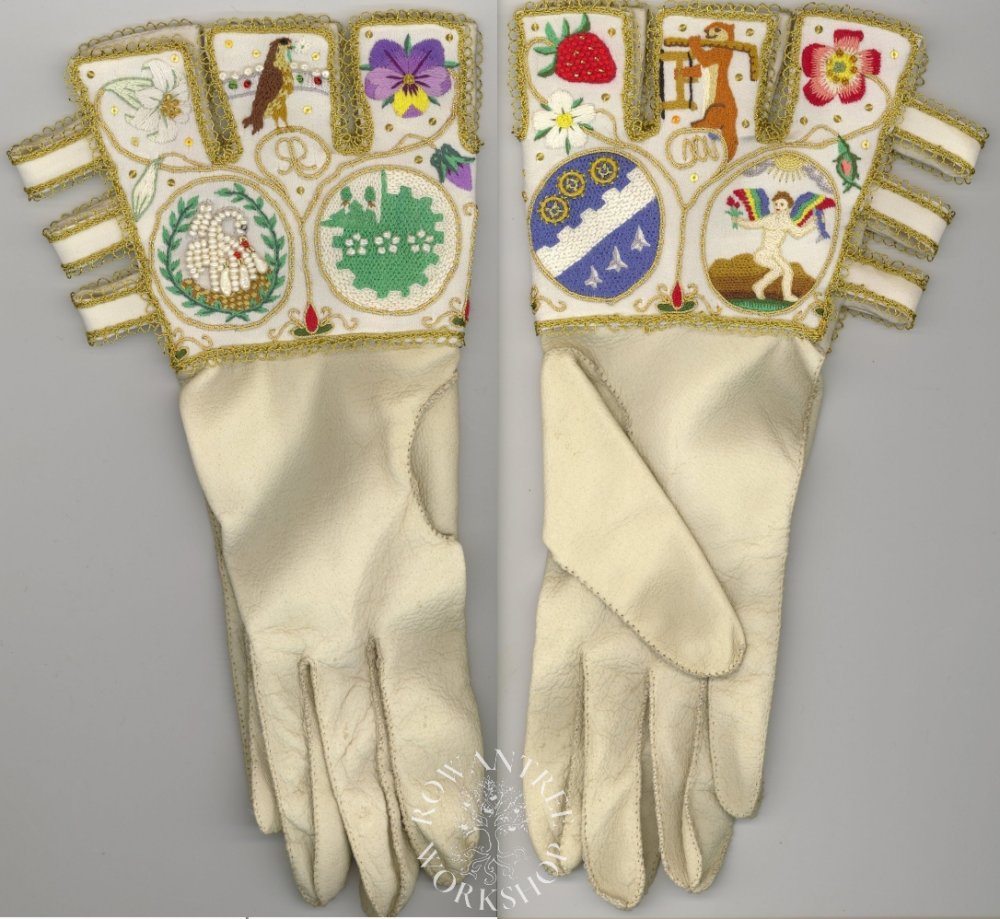
According to Digby (1963), gloves were not just an item of clothing, but were used as gifts and as tokens of love and esteem. Most gloves were made of doe or kidskin, with embroidery worked on a silk cuff.
Research and Design
There are many elaborate extant examples of gloves from the late 16th century, most with a fine leather glove and separate embroidered cuff, although a few also have embroidery on the glove itself.
Many gloves were further embellished with couched gold, seed pearls, purl, beads and spangles or ‘Oes’. Later examples were often edged with gold bobbin lace, which was also used to decorate the join with the main glove. The cuffs may be whole or tabbed, and some have bands or ribbons at the open edge.
Ashelford (1988) notes gloves worn in belt or on hat, often as tokens to a gallant from his favourite mistress. Queen Elizabeth gave Gorge Clifford a glove as the mark of her Champion and he wore it thereafter on all public occasions – as seen in this miniature by Hilliard.
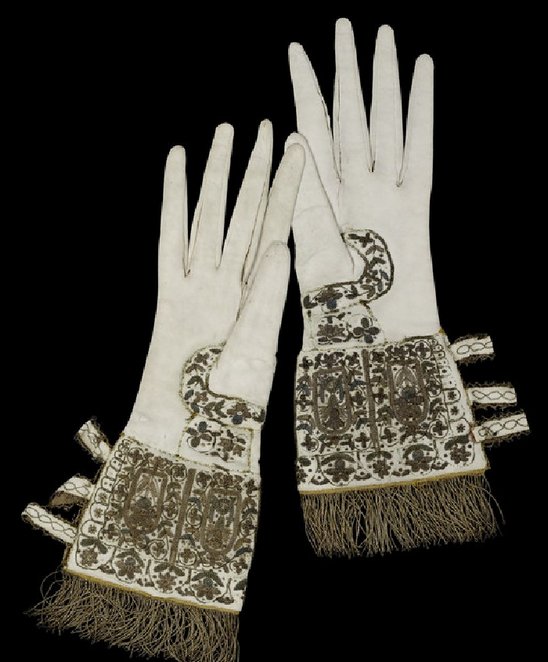
Source: Ashmolean Museum
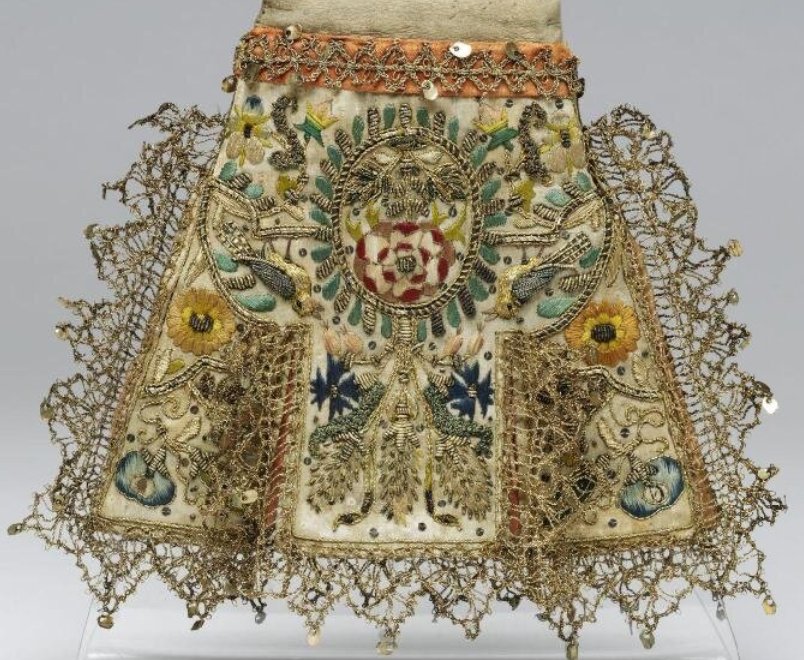
Source: V&A Museum
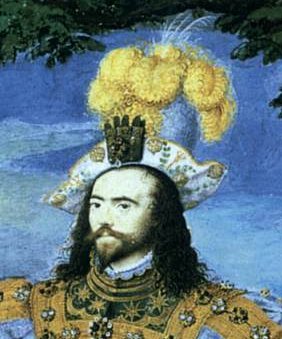
Source: Web Gallery of Art
My design of the cuff is the typical conical section, with the flared edge divided into six tabs. Each tab has a separate design element, with the main section developed as a series of oval cartouches, surrounded by gold twist.
Elizabethans were very fond of symbols and gloves are a wonderful medium for such symbolism. The cartouches hold our devices and awards, and an allegory of The Power of Love, drawn from Alciato’s Book of Emblems (Alciato, Emblem 107).
The lily, heartsease (pansy), strawberry and rose are frequently seen in Elizabethan embroidery. Birds and animals (both natural and heraldic) were also a feature. All these elements were worked in a variety of stitches, with an emphasis on different textures and embellishments.
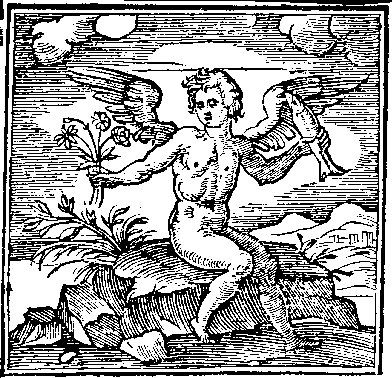
Source: Alciato’s Book of Emblems
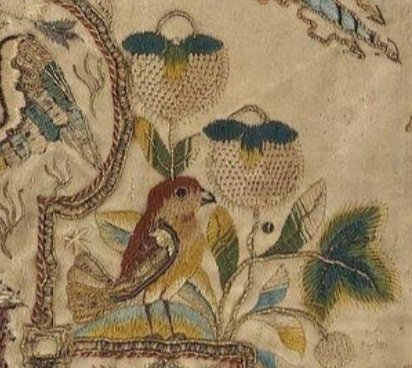
Source: V&A Museum
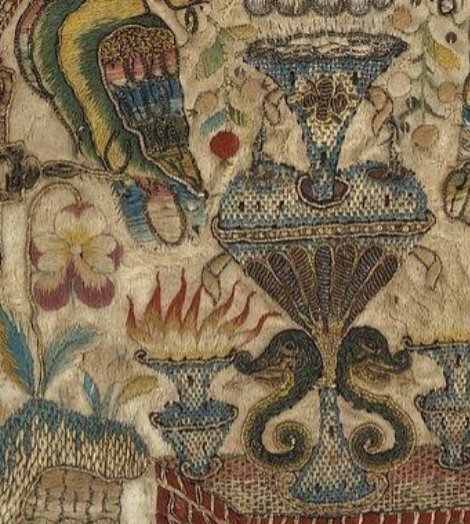
Source: V&A Museum
Construction
I drafted a pattern for the glove in an Elizabethan style, with whole forchettes (no seam at the base – less efficient in cutting, but nicer to wear). I made the glove from fine calfskin, sewn with glovers stitch in waxed silk twist. In keeping with the Elizabethan style, the stitching is worked on the outside.
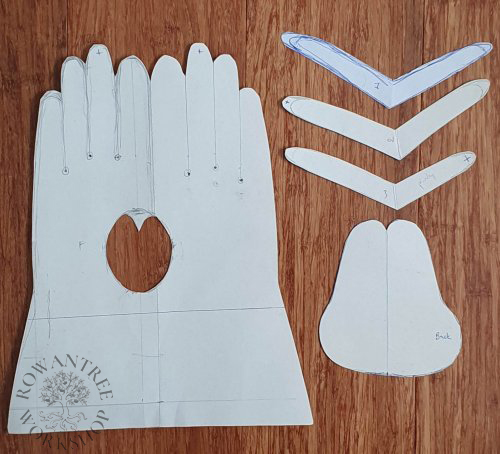
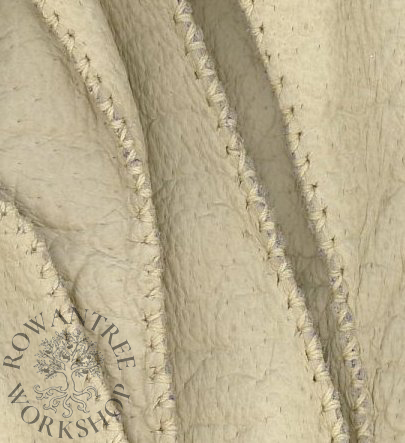
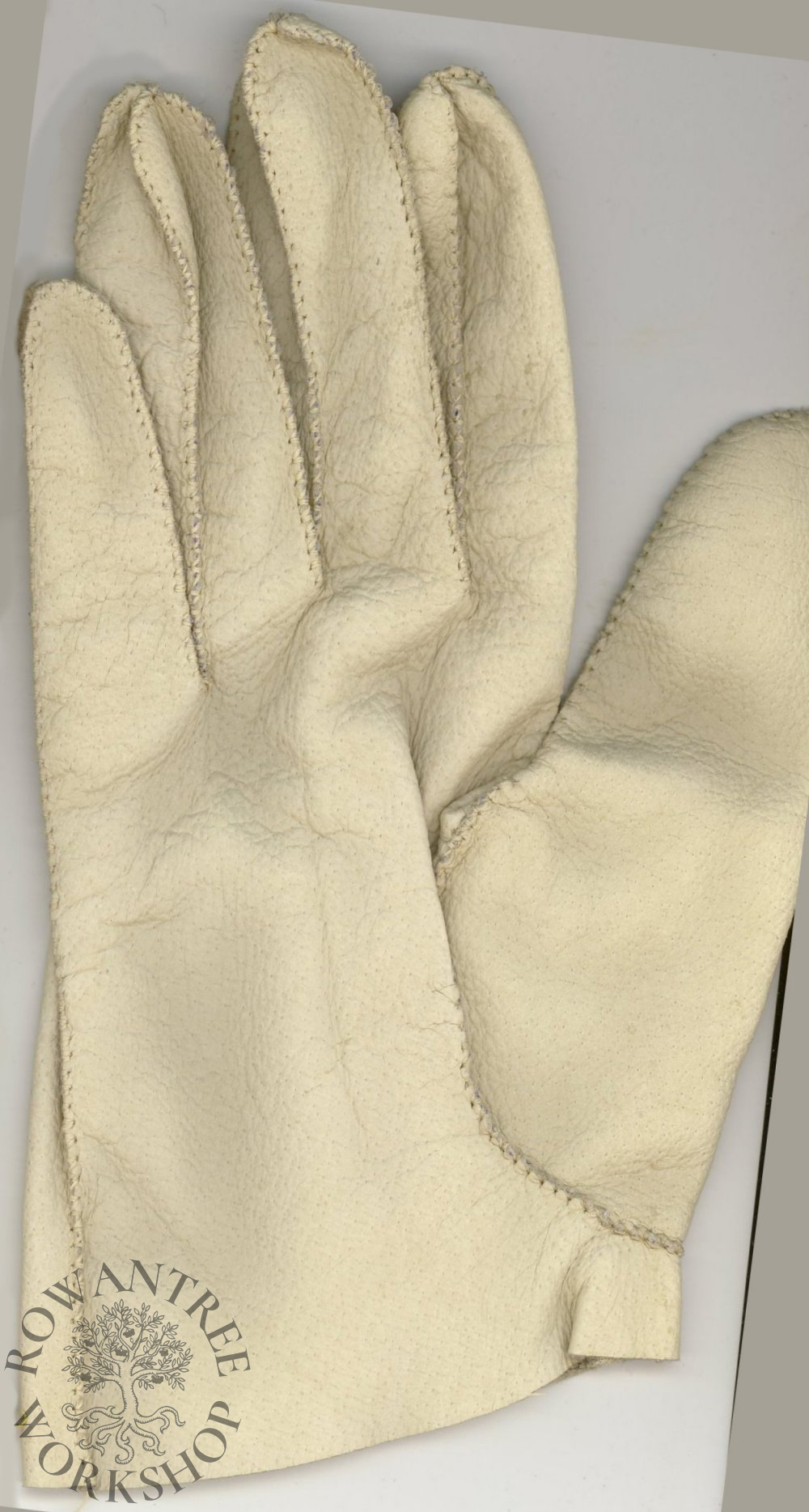
Once I had the cuff measurement from the compelted glove, I could design the embroidery for the cuff, using the elements detailed above.
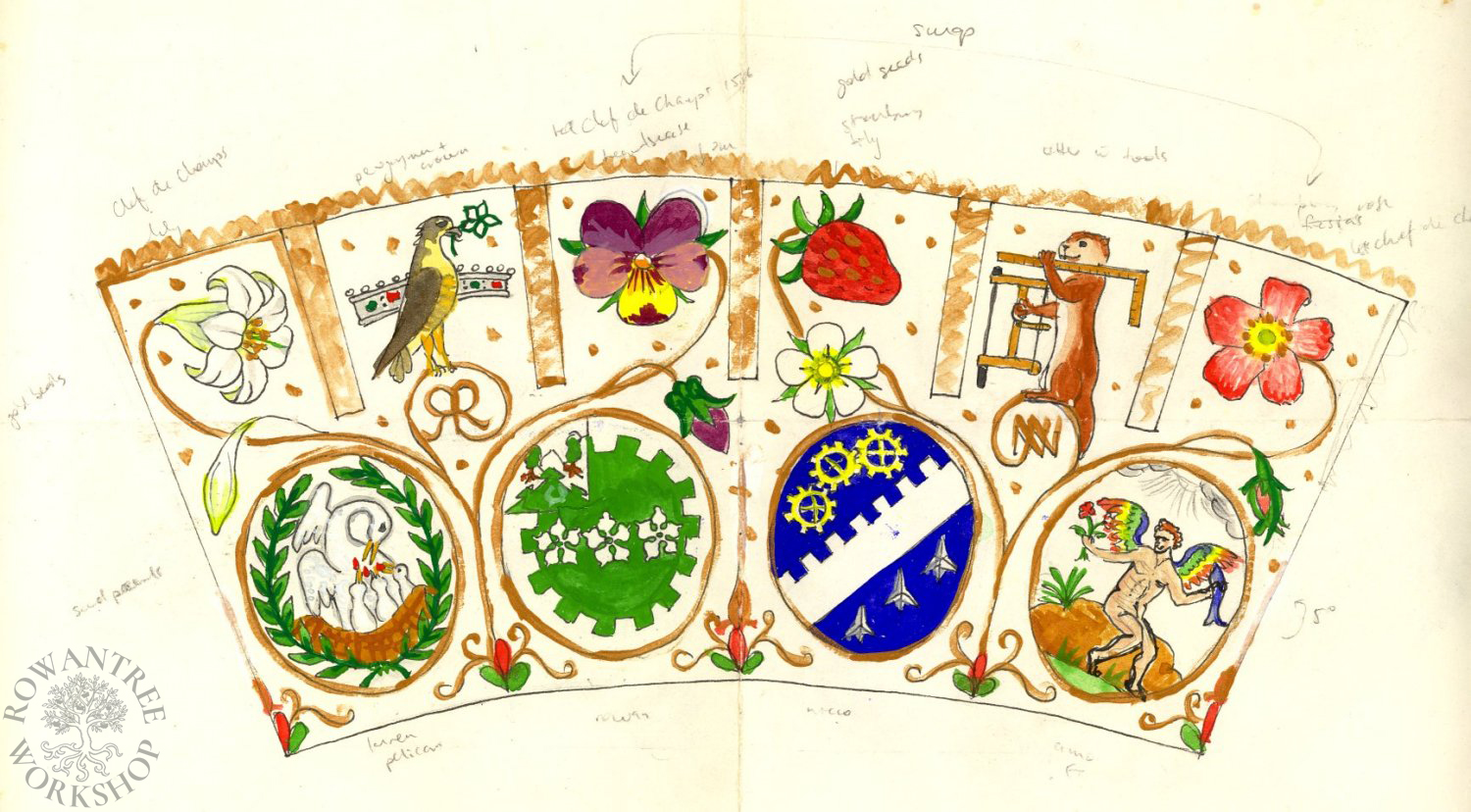
I transferred the design to the cream silk satin in pencil, using a lightbox. I sewed string around the edge of the silk for strength, and stretched the silk into my frame, whipping around with heavy linen thread. The heavy weight silk satin needed no extra backing.
I worked all the silk elements first, using Maderia and Ver au Soir silks, in a variety of Elizabethan stitches – Elizabethan satin stitch, brick-stitch, long and short stitch, split-stitch, buttonhole, French knots, detached chain and detached buttonhole. I did much of the work under a magnifying glass.
Once these were done, I added the other elements – the sun is laid jap gold, with couched gold twist providing outlines around the cartouches, fine branches and monograms. Extra luxury is provided with seedpearls, gold purl, glass beads and spangles in silver-gilt.
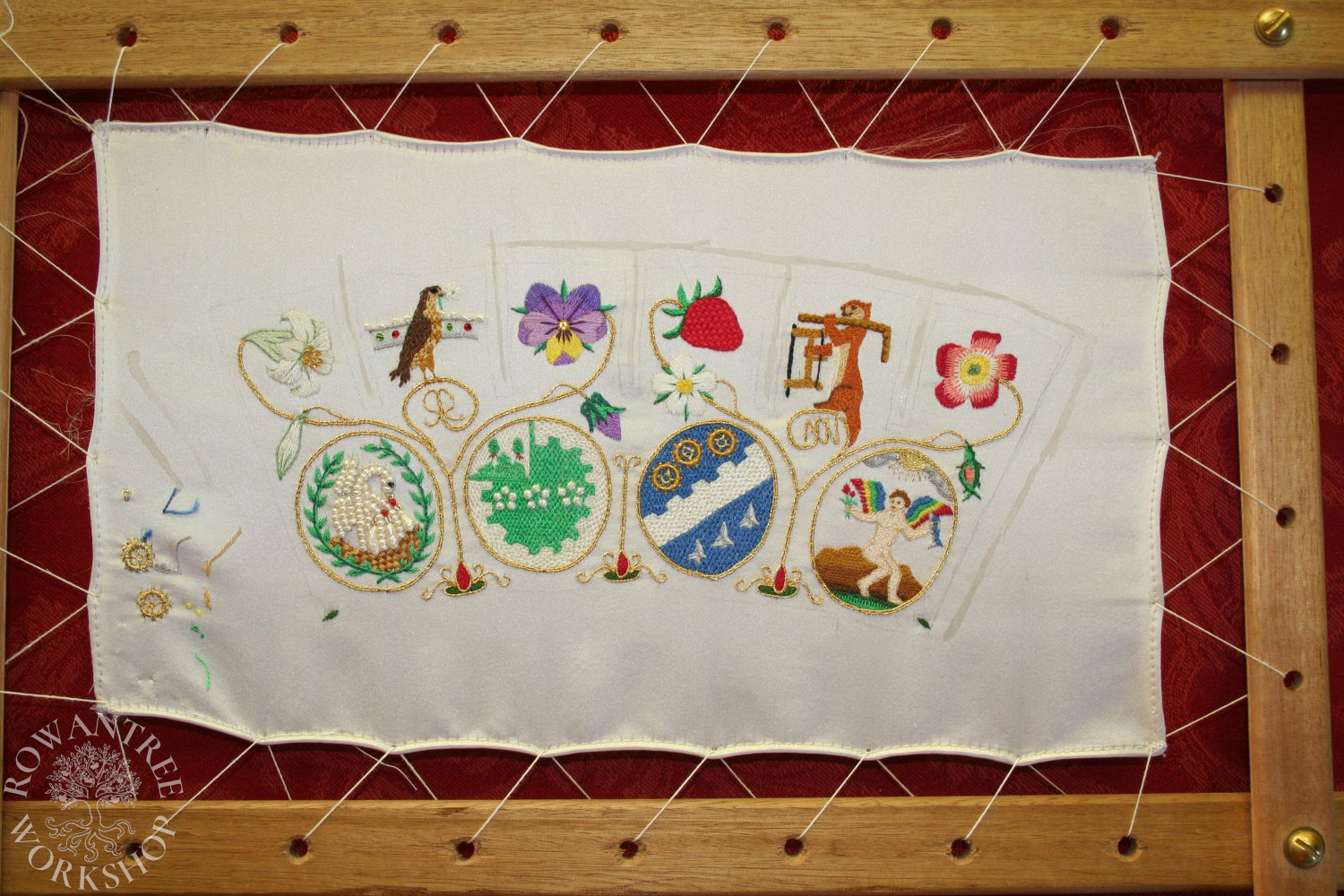
Once the embroidery was complete, I ran lines of wax around the edge, to reduce fraying. I cut it off the frame, cut the cuff out, turned the fine hems and basted them. I edged the tabs in fine commercial gold lace in a simple bobbin lace pattern, and made the ribbons the same way. I lined the ribbons in silk, and sewed them to the cuff, then lined the cuff with silk.
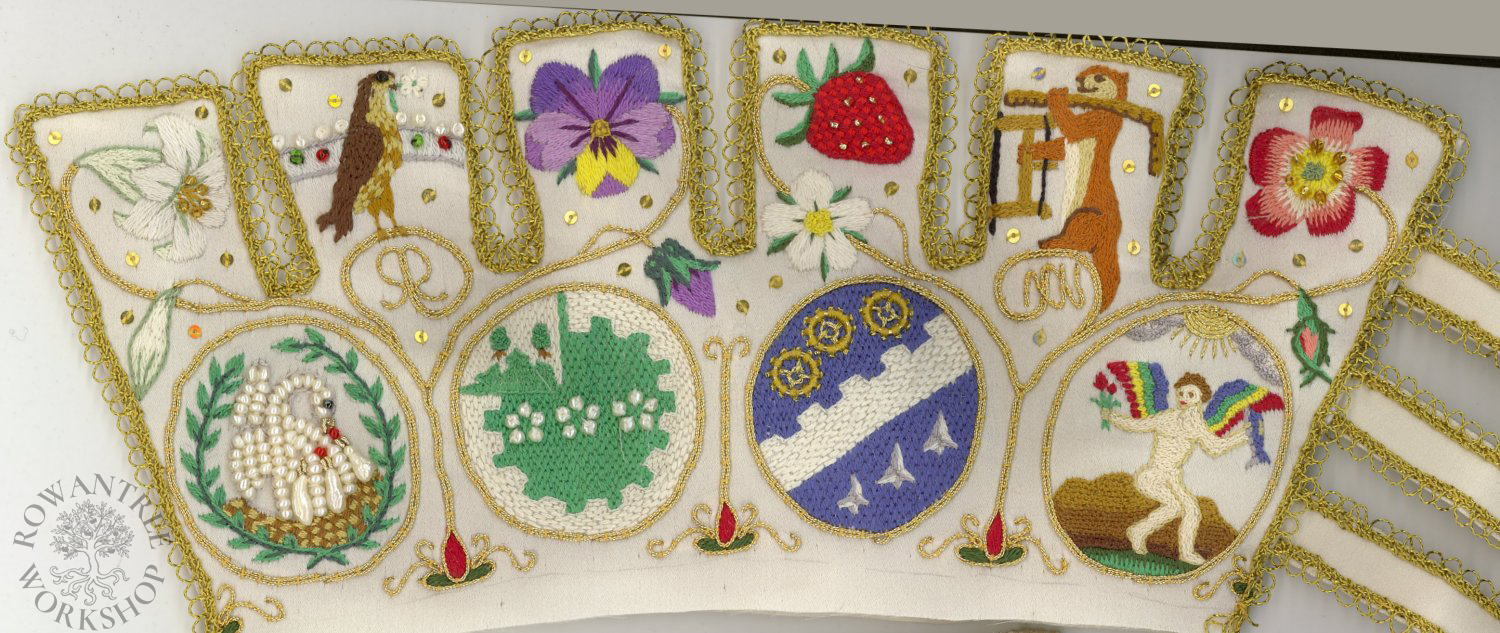
Once the glove was finished, I sewed it to the cuff, with the leather between the outer silk and lining. I couched a final line of gold braid to hide the seam.
The finished glove fit my hand well, and made a suitable token to go with Nico’s Elizabethan attire.
